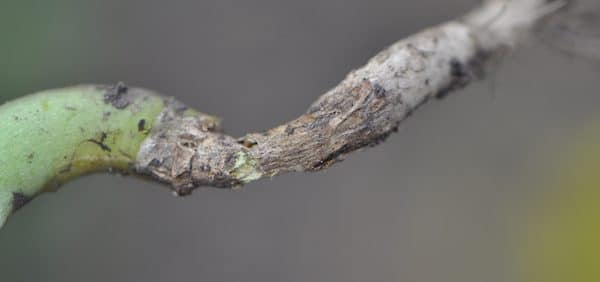These can be hard to tell apart sometimes. Pinched or otherwise damaged-looking stems can occur with all three. Here’s how to tell them apart.
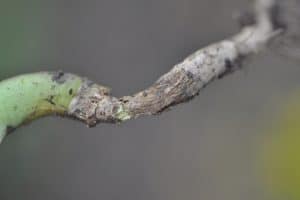
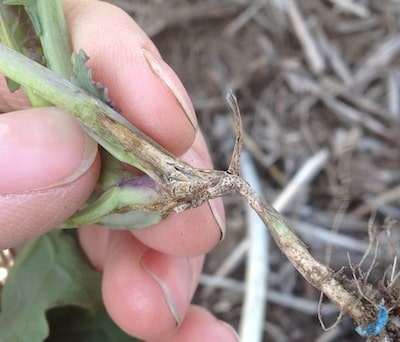
Blackleg
Symptoms: Use this 3-step process to positively ID blackleg: (1) Does it have cankers that cause the base of stem to turn woody? If yes, then blackleg likely. (2) Are the any pycnidia at the base of the stem? If yes, then this is blackleg. No other fungi produce pycnidia. Especially if in conjunction with a canker. (3) When you cut the stem base/root top, is it black inside? If yes, then it is blackleg. Any one of these steps can indicate blackleg, but the presence of two or more of these symptoms confirms it. For final confirmation, samples could be sent to a diagnostic lab. Pinching of a stem can occur with a severe case of blackleg. More information and photos.
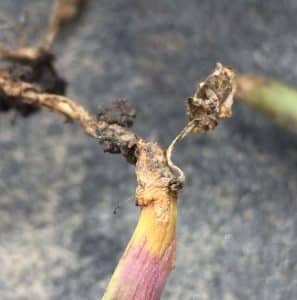
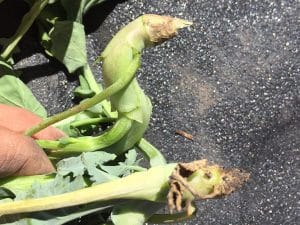
Foot rot
Symptoms: Rhizoctonia infection at the bolting and flowering stages of the season can cause roots to pinch off at the crown — which is right around ground level. Roots will also show some browning around and below the girdling. This “browning” and “girdling” are what give brown girdling root rot (BGRR) its name. Foot rot, another similar rhizoctonia infection, can sever crown from roots entirely. Look for smooth clear rotting that is sometimes soft and squishy. More information.
Not symptoms: Dry rot (base of stem turns woody) is more likely to be blackleg.
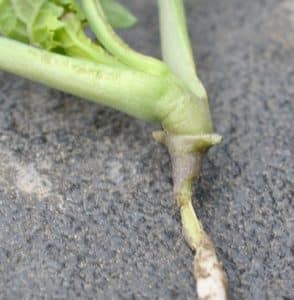
Cutworms
Symptoms: Cutworms will feed on both weeds and crop within a patch. If you find patches of missing or damaged plants, dig around healthy plants next to the missing or damaged plants. Cutworms have likely moved on to these nearby healthy plants. Cutworm damage may start to brown, like a rot, but there should be clear evidence of biting or chewing. More information and photos.
Not symptoms: Crop damaged but all weeds still standing mean its likely a host-specific disease.
A scenario…
A CCC agronomist got a call from a farmer who thought they had lots of cutworm damage in a field, but they scouted and couldn’t find any cutworms. The field was canola on canola. The agronomist went out and diagnosed it as clearly blackleg. The farmer wanted to spray, but spraying for cutworms would have no benefit if the issue was blackleg. And spraying for blackleg would be too late. Early infection causes the major yield loss and fungicide applied now would not eradicate existing disease, only protect against further infection. And while one would think stopping further infection might have a benefit, infection that occurs past the 4-leaf stage has little effect on yield.
Further reading:
Check crowns and primary root
New blackleg brochure: BLACKLEG_SP Brochure
Canola Encyclopedia sections on blackleg, root/foot rot and cutworms.

